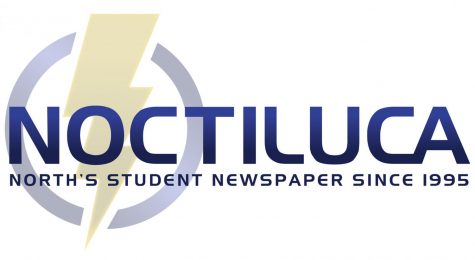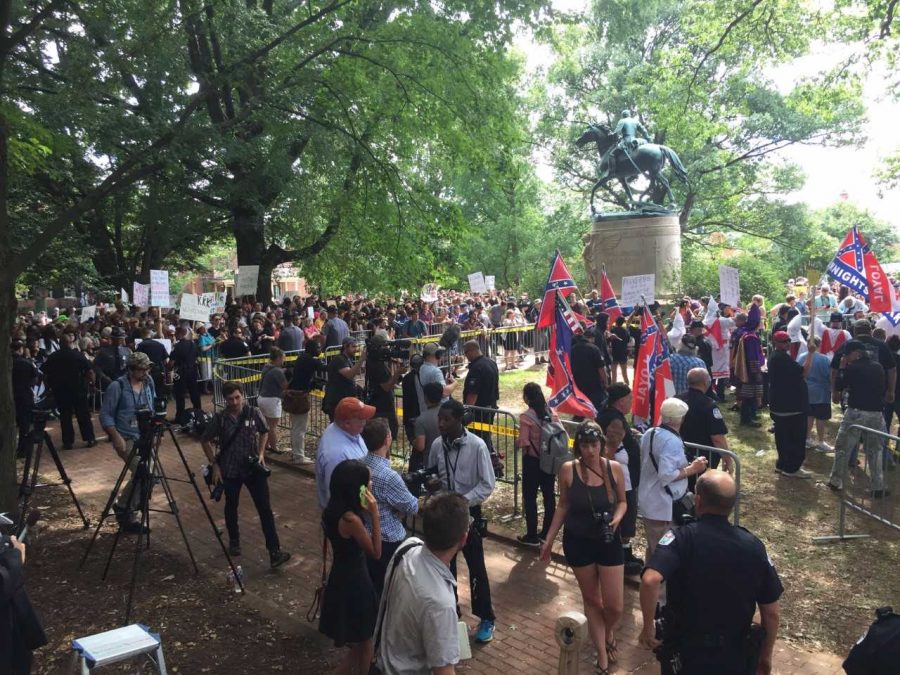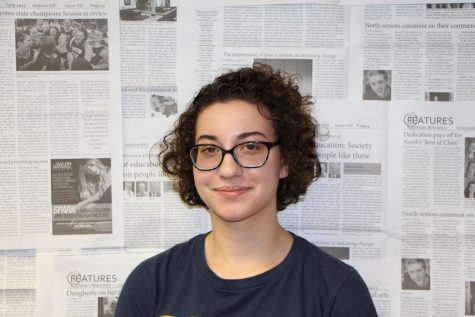North Student sees Charlottesville protests up close
October 12, 2017
I spent part of my summer as a media production intern for the NBC affiliate station, WVIR-TV NBC29, in Charlottesville, Virginia. During that time, I worked with various members of the press, the local and state governments, and local citizens put in the spotlight. Most of my reports were for classic small-town stories: a museum for dogs, the highway institute crash-testing cars, and a new restaurant opening. But I also dealt with a story that was televised around the world. As an outsider to the state with a diverse religious background, this is my account of the tragedy in Charlottesville.
Another act showcasing long-standing racial intolerance has disrupted the calm facade of this nation.
A small, picturesque college town located just a few miles from the capital of Virginia has been entangled in a copious amount of controversy as of late. The statues of two Confederate generals, Robert E. Lee and Thomas “Stonewall” Jackson, have put Charlottesville into the spotlight. The dispute over the statues started back in 2012 when a council member innocently brought it up and realized tensions ran deep. By 2016, the city’s vice mayor, Wes Bellamy, was leading petitions and various demonstrations to encourage the removal of the statutes. Unfortunately, opposition came immediately, and lives were destroyed in this story of another hate-filled riot.
On July 8th, 2017, a bus rolled into town stuffed full with members of the Ku Klux Klan. Dressed fully in purple and red robes, confederate flags, and openly-displayed guns, the Klan members marched into the center of Justice Park, formerly known as Jackson Park, and shouted their message for the world to hear. Except, no one actually heard them. Various Klan members held signs saying things like “Israel needs more die-versity” and crudely painted shields sporting “LWK” for Loyal White Knights. Others carried posters with inappropriate derogatory terms. But no amount of signs would allow them to speak over the roaring crowd. People of all ages, genders, and races surrounded the fenced-in Klan, screaming obscenities and phrases like “Black lives, they matter here,” drowning out any attempts from the lead Klan member to insult various races or religious groups.
Police officers stood off to the side, braving the 95-degree weather in full riot gear. Despite the heavy presence of firearms and the tension-filled face-offs between the bystanders, the police, and the Ku Klux Klan, the rally didn’t truly seem like a dangerous event. But the true test of Charlottesville was still coming.
Jason Kessler seemed like a perfectly normal man when I first met him. If I hadn’t known he was at the police station to appeal for a rally that caused injuries to countless people, I would’ve thought he was just another businessman perusing downtown Charlottesville. His entourage of white men in leather jackets with confederate flags stamped to the back was the only clue.
Even before the “Unite the Right” rally on August 12th, people around town were feeling anxious and paranoid. It was a common sentiment that this rally would far outshine the original KKK gathering. The rally had no clear start time, the location wasn’t decided on until almost the day before, and guns weren’t only allowed- they were encouraged. This is the rally that made global news.
To me, it seems as though America is stuck in the middle of a turbulent storm. No clear acknowledgment has been given to address the strain and violence occurring every day. Instead, people seem content to ignore the truth. Members of the Ku Klux Klan and other neo-Nazis are still haunting North America. It’s time to understand that racism and white supremacy are real concepts and are terrorizing this country to the point of absolute destruction.



